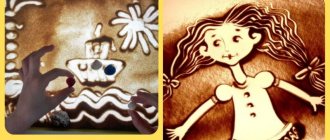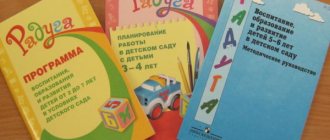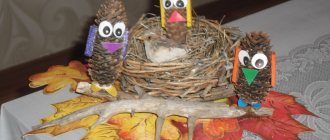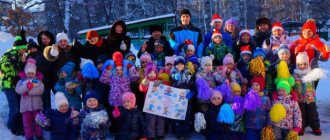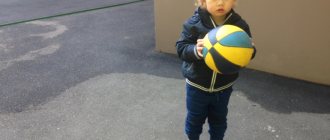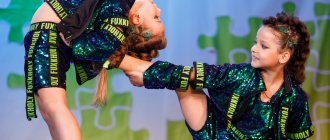Lesson summary on FEMP in the senior group
Tatyana Leontyeva
Lesson summary on FEMP in the senior group
FEMP senior group
I. A. Pomoraeva
Lesson 3
• Continue to teach understanding the relationships of adjacent numbers within 10.
• Improve the ability to compare the size of objects by presentation.
Strengthen the ability to divide a circle and a square into two and four equal parts, learn to name parts and compare the whole and the part.
Didactic visual material
Demonstration material. Flannelograph, 10 triangles and squares each; card with three windows (in the central window there is a number card with 2 circles and cards with 1 and 3 circles)
Handout. Two-page cards, triangles and squares (12 pieces for each child)
;
cards with three windows (the central window of the number card shows from 2 to 9 circles, sets of number cards with the image from 1 to 10 circles; envelopes containing parts of geometric figures (one second or one fourth of a circle, square or rectangle)
boxes with the remaining parts of the figures
(one for two children)
.
Guidelines
1 part. Didactic game “Count it down”
.
The teacher asks the children to complete the following tasks:
- count on the top strip of the card one triangle more than the number 9. How many triangles did you count? Why did you count so many triangles?
- count on the bottom strip of the card one square less than the number 10. (same questions)
.
Then the teacher clarifies: “What numbers can be used to indicate this number of triangles (squares? Which number is greater: ten or nine? Which number is smaller: nine or ten? How much is the number ten greater than the number nine? How much is the number nine less than the number ten? How can you equalize these numbers?
Children equalize the numbers in the chosen way and explain their actions. Several children perform this task on the flenelegraph at the same time.
Part 2. Didactic game “Find your neighbors”
.
The teacher explains to the children the rules of the game “Each number has two neighbors. We have to find them. For example, the number two has an older neighbor with the number three , which is one more, and a younger neighbor with the number one, which is one less. (As the numbers are named, the teacher shows the corresponding number cards and covers the empty squares with them) Now fill in your cards.
Children, at the teacher’s signal, complete the task and justify their choice.
The game is repeated 3-4 times with changing cards.
Part 3. Didactic game “Make a whole from its parts”
.
Each child's envelope contains a second (one fourth)
parts of any geometric figure.
The teacher offers to compose a whole geometric figure based on its part, selecting the missing ones from the box.
After completing the task, the children determine what shapes they got and how many parts they consist of.
Then the teacher clarifies: “What can you call each part of your figure? Which is greater: the whole or one second (one fourth)
part?What is less: one second
(one fourth)
part or the whole?
Part 4 Game exercise “Identify correctly”
.
Children stand in a semicircle. The teacher asks a question and throws the ball to the child, who must answer it. For example: “What is higher: a kindergarten building or a birch tree on our site? What is lower: lilac bushes on our site or a rowan tree?” etc.
I. A. Pomoraeva
Lesson 4
• Improve the ability to form the number 5 from units.
• Practice the ability to move in a given direction.
• Strengthen the ability to consistently name the days of the week, determine what day of the week is today, what it was yesterday, what it will be tomorrow.
Didactic visual material.
Demonstration material. Three plans - movement patterns, cards with images of 3 to 5 circles, a week calendar in the shape of a disk with an arrow.
Handout. Pictures of clothes and shoes, colored pencils (6 pieces for each child, boxes with stars (4 pieces for each child), cards with images of labyrinths (for each child, simple pencils.
Guidelines.
1 part. Game exercise “Make the number correctly”
.
The teacher invites the children to compose a number using objects: “Determine what number can be used to indicate the number of circles on a card, and compose this number using pencils of different colors (cards with images of items of clothing, shoes)
.
The game exercise is repeated 3-4 times with changing cards.
After completing the task, the teacher asks the children questions: “What number did you use to indicate the number of objects on the card? How many items did you take in total? How many items did you take? How did you come up with the number?
Part 2. Game exercise “Let’s find the secret according to plan”
The teacher, together with the children, examines the plan and directions of movement and suggests walking along a certain path, for example: forward to the construction corner, turn right and walk to the doll corner, turn left and walk to the nature corner (boxes with stars)
. The point of reference for movements is the teacher’s desk.
Next time, the starting point, direction of movement and landmarks change.
The exercise is performed by 3-4 children in turn. After each task, children talk about the direction of their movement.
Part 3. Game exercise “Name the days of the week”
.
The teacher, together with the children, examines the calendar and clarifies the name of each day of the week, indicating it with arrows. Then he gives the children tasks:
-show on the calendar what day of the week it is and name it;
-show and say what day of the week it was yesterday;
- show and say what day of the week it will be tomorrow.
Part 4 Game exercise “Find a way out of the maze”
Each child has cards with a picture of a labyrinth. The teacher suggests looking at the labyrinths, finding exits from them and drawing them with a pencil. After completing each task, children receive stars.
Summary of GCD for FEMP in the senior group according to the Federal State Educational Standard “Journey through a Fairy Tale”
MKDOU "Kalacheevsky kindergarten No. 1 of general developmental type"
Summary of GCD for FEMP in the senior group according to the Federal State Educational Standard “Journey through a Fairy Tale”
Prepared by: Belikova Vera Aleksandrovna, teacher
Topic: Ordinal counting up to 10 Goal: to create conditions for consolidating ordinal counting up to 10. Objectives: Educational: to promote the accumulation of skills in counting to 10 and back, the ability to correlate the number of objects with a number; knowledge of geometric shapes (circle, oval, square, rectangle, triangle), names of days of the week, seasons, months and their sequence. Strengthen the ability to navigate on a sheet of paper. Developmental: develop social skills, the ability to work in a group, in pairs; find a solution and draw conclusions. Develop attention, logical thinking, memory and speech. Educational: to cultivate restraint, perseverance, goodwill, feelings of mutual assistance, and the desire to help. Types of children's activities: gaming, productive, musical and artistic. Forms of organization: frontal, individual, group, work in pairs. Form of implementation: use of manuals, musical accompaniment, demonstration of illustrative aids, ICT; searching and problematic questions for children, encouragement, explanation, leading to a conclusion; creation of play motivation, active activity of children, comparison, juxtaposition, surprise moment. Equipment: fairy-tale music, geometric shapes, cards with numbers, magnetic board, bell, “stones”. Demonstration material: Drawing of a castle, entrance littered with stones, Handouts: Cards with numbers, Cuisenaire counting sticks, lined sheets, envelope with geometric shapes, colored pencils, coloring books. OF NOD Stages Activities of the teacher Activities of children Notes 1. Organizational moment. - The bell rang and invited us to gather in a circle! - Guys, do you like to listen to fairy tales? – Would you like to get into a fairy tale and help our heroes? -Today I want to tell you a fairy tale, it’s not a simple fairy tale, it’s magical, with mathematical tasks. -And to get into a fairy tale, you need to close your eyes and say the magic words “1, 2, 3 turn around, find yourself in a fairy tale.” Open your eyes. The fairy tale begins. Children enter the group to the music. -Yes -Yes 2. Main part. - Once upon a time there lived a king. And he had a beautiful daughter. Once the king left on his royal business, but his daughter remained at home. She went out into the garden for a walk, and then the wind came, picked up the princess and carried her off to a distant kingdom. Ivan Tsarevich became sad and went to look for the princess. A day goes by, two days go by. Approaches the hut on chicken legs. And Baba Yaga lives there. Ivan Tsarevich told about his misfortune. Baba Yaga promised to help if Ivan Tsarevich answered her questions. – What day of the week is it today? – What day of the week was yesterday? – What day of the week will it be tomorrow? – What day of the week will be the day after tomorrow? – What seasons do you know? Name it. - How many months are there in a year? Name it. – Name the parts of the day.
– Wednesday
– Tuesday – Thursday – Friday -Winter, spring, summer, autumn -12 Morning, afternoon, evening, night
Graphic dictation - We completed Baba Yaga’s task. - Well done! – Baba Yaga gave a ball and sent the Tsarevich to Kikimora. She has a map. The ball rolled, and the Tsarevich followed it. The ball rolled towards the swamp. And Kikimora appeared in front of the Tsarevich. She listened to the Tsarevich and decided to help, and in order to get the card, she had to complete her task. - Let's help Ivan Tsarevich. -You have pencils and paper in front of you. – Get ready to listen to the task and draw – draw a red triangle in the upper left corner; – draw a green square in the lower right corner; – draw a black oval in the center; – draw a blue rectangle in the lower left corner; -draw a yellow circle in the upper right corner.
Children perform dictation
– What geometric figure did Vanya draw in the lower right corner? – Where did Sofia draw the yellow circle? – In what corner did Andrey draw the oval?
What shapes did we not draw? -Green square - In the upper right corner - None - Oval in the center - Rhombus, trapezoid - We completed the task, and Kikimora gave the map to Ivan Tsarevich, you can go further. The ball rolled further and brought Ivan Tsarevich into the fairy-tale forest. - So we found ourselves in a fairy forest. Miracles happen in the forest. The forest dwellers have prepared a task. – How many ears do two mice have? Why?
– How many bellies do 5 hippos have? – Birds were flying over the river: a pigeon, a pike, two tits? How many birds? Why?
– How many hooves does a horse have when the horse lies in the grass? – How many houses do 100 ants have? How many times a year does Ivan Tsarevich have a birthday? And you? The forest inhabitants advised him to gain strength to move on.
– 4 One mouse has two ears 2+2 equals 4 – Five
-3 Pike is not a bird - Four - One - One -One Physical education lesson - Ivan Tsarevich once - bent over, straightened up, Two - bent over, straightened up, spread his arms to the sides, and walked, walked, followed the Princess into the wilderness of the forest, suddenly he saw a stump He sat down quietly and dozed off. Children, together with the teacher, perform physical exercises - Children, open your eyes, you see, there is a castle in front of us. - Here is the entrance to the castle. – The door behind which the Princess is hidden is littered with stones. -To enter the castle you need to dismantle the stones. Roma will sort it out at the board, and we will help him at the tables. In front of you is a number series from 1 to 10. - Everyone got ready and started working. – Name a number greater than 2 by 1 – Name a small number
– The largest • – A number that is less than 7 by 1
– Name the neighbors of the number 6 • – Show a number greater than 3 by 1
– Name the neighbors of the number 9
Children go to the tables
– three – one – 10
– six – 5 and 7
– 4 – 8 and 9 – Well done, we cleared the door to the castle of stones. - But we can’t enter, we need to complete one more task, if everything is done correctly, the door will open. – Ivan Tsarevich dropped the crystal key on the ground, and it may have broken and been lost. Guys, in order for us to find the key, we need to collect it.
Children make a key out of sticks
from Cuisenaire sticks - Well done. -And now you and I will insert the key into the lock and free the princess. The fairy tale heroes come out, thank the children for their help and “give” the children coloring books. The children insert the key into the lock and open the gate. The fairy tale heroes say goodbye to the children.
The final part - And now it’s time for us to return to kindergarten. Close your eyes and start counting from 1 to 5.
– Where did we travel today, guys?
- What did you like?
– What would you like to wish our guests?
Children count in chorus - Here we are in kindergarten. We visited a fairy tale, We learned a lot, We returned back, The kindergarten is very happy to see us. – In a fairy tale - perform various tasks Children say wishes to guests
Used Books: . Comprehensive thematic planning according to the program edited by N.E. Veraksy, T.S. Komarova, M.A. Vasilyeva. Senior group. Teacher, 2015. Complex classes according to the program “From birth to school” edited by N.E. Veraksy, T.S. Komarova, M.A. Vasilyeva. Senior group/author - comp. N.V. Lobodina. Volgograd: Teacher, 2015. Falkovich T.A., Barylkina L.P. Formation of mathematical concepts: Classes for preschoolers in additional education institutions. – M.: VAKO, 2009. Novikova V.P. Mathematics in kindergarten. – M.: MOSAIC – SYNTHESIS, 2009.
Collection of samples of teaching aids for the sections of FEMP “Quantity and Counting”, “Quantities”
state budgetary professional educational institution
Rostov region
"Zernograd Pedagogical College"
Collection of samples of teaching aids for the sections of FEMP “Quantity and Counting”, “Quantities”
Zernograd 2022
Compiled by:
Angelina Ivanova, student 4 B group, specialty “Preschool Education”
Supervisor:
Oksana Aleksandrovna Globina, teacher of the professional cycle of the highest qualification category at the State Budgetary Educational Institution of Regional Educational Institution “ZernPK”.
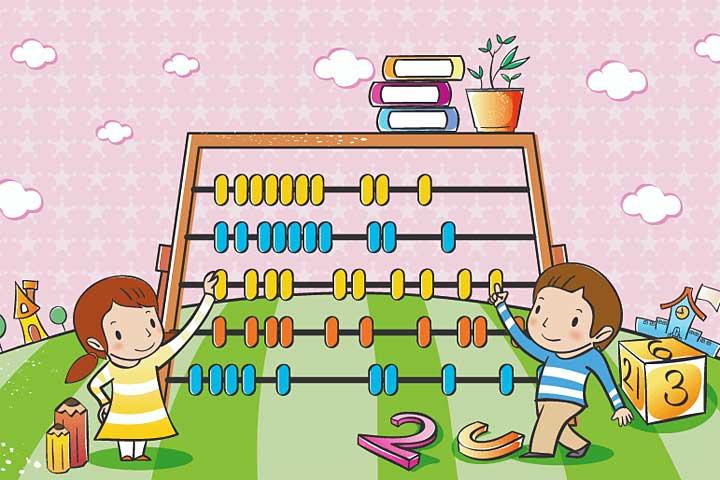
The proposed collection is compiled in accordance with the Federal State Educational Standard for Secondary Professional Education in specialty 440201 “Preschool Education” and in accordance with the work program MDK 03.04. “Theory and Methods of Mathematical Development of Children” is intended for both individual and group activities of students specializing in “Preschool Education” in the educational process of the Zernograd Pedagogical College, as well as for educators, methodologists of preschool educational institutions and parents of preschool children.
This collection includes a number of samples of teaching aids on the sections of FEMP “Quantity and Counting”, “Quantities”, which contribute to the correct organization of direct educational activities of preschoolers in mathematical development.
TABLE OF CONTENTS
Introduction
Samples of teaching aids for the FEMP section “Quantity and Counting” in the junior group
Samples of teaching aids for the FEMP section “Quantity and Counting” in the middle group
Samples of teaching aids for the FEMP section “Quantity and Counting” in the senior group
Samples of teaching aids for the FEMP section “Quantity and Counting” in the preparatory group
Samples of teaching aids for the FEMP section “Magnitude” in the junior group
Samples of teaching aids for the FEMP “Value” section in the middle group
Samples of teaching aids for the FEMP “Magnitude” section in the senior group
Samples of teaching aids for the FEMP “Magnitude” section in the preparatory group
INTRODUCTION
The
mathematical development of preschoolers should be understood as shifts and changes in the cognitive activity of the individual that occur as a result of the formation of elementary mathematical concepts and related logical operations.
The formation of elementary mathematical concepts
is a purposeful and organized process of transferring and assimilating knowledge, techniques and methods of mental activity (in the field of mathematics).
Samples of teaching aids for the FEMP section “Quantity and Counting” in the junior group

Samples of teaching aids for the FEMP section “Quantity and Counting” in the middle group
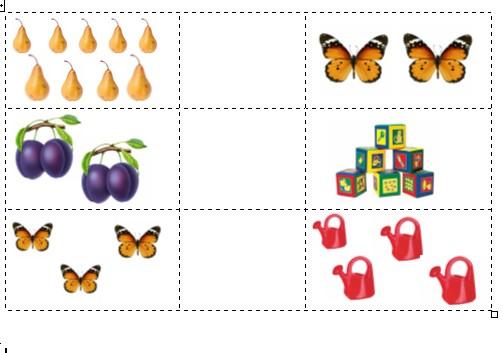
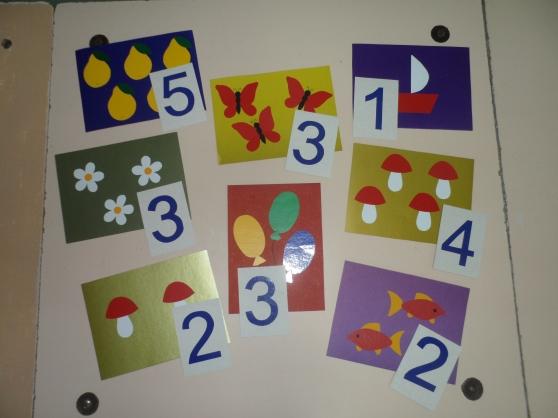
Samples of teaching aids for the FEMP section “Quantity and Counting” in the senior group

Samples of teaching aids for the FEMP section “Quantity and Counting” in the preparatory group
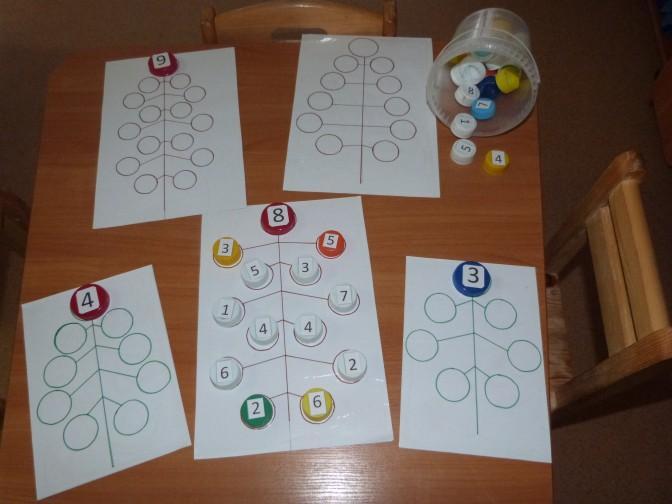
Samples of teaching aids for the FEMP section “Magnitude” in the junior group
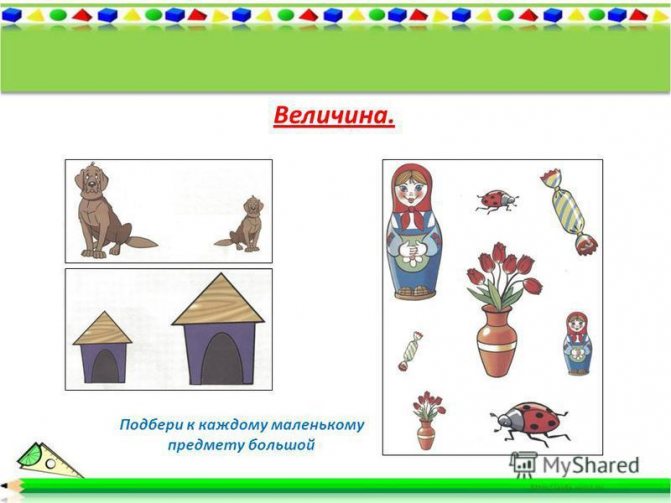
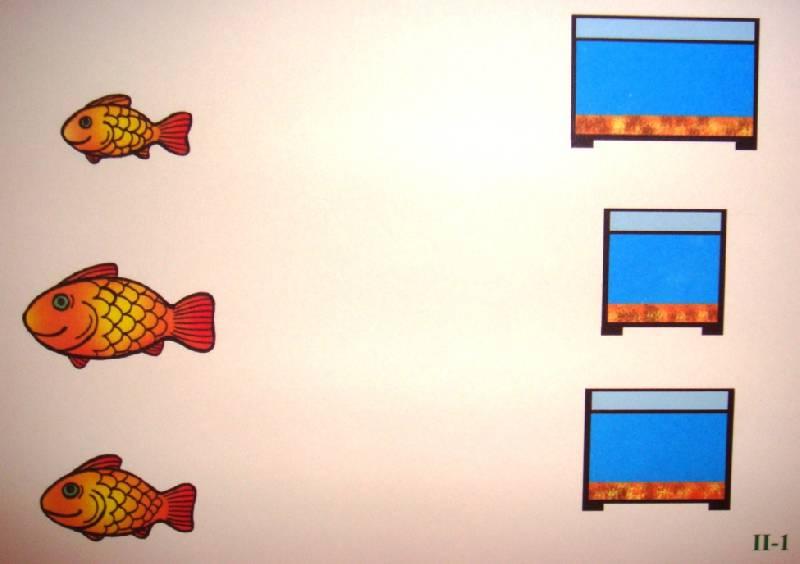
Samples of teaching aids for the FEMP “Value” section in the middle group

Samples of teaching aids for the FEMP “Magnitude” section in the senior group
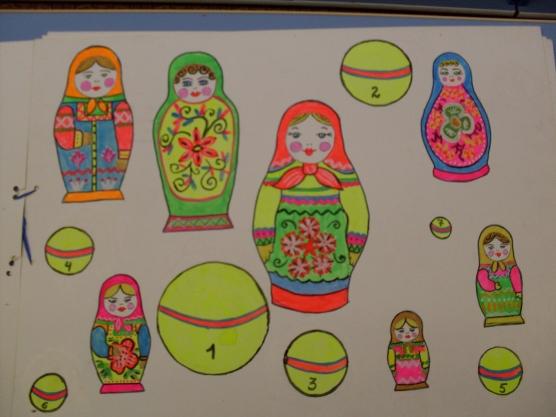
Samples of teaching aids for the FEMP “Magnitude” section in the preparatory group
Literature
- Kozlova, S.A. Preschool pedagogy [Text]/ S.A. Kozlova, T.A. Kulikova. – M.: “ACADEMY”, 2015 with changes. – 432s.
- Freilakh, N.I. Methodology of mathematical development [Text]/ N.I. Freilach. – M.: Publishing House “FORUM”, 2014.- 240 p.
